The mountain village of Koustoyerako, high above and 10 km north-east of Sougia, has a long and proud history of resistance to foreign occupation, and so was destroyed by the Venetians, Turks, and most recently (in 1943) by the Germans.
The wild and forested area above, fringing the White Mountains, was a stronghold for Cretan fighters, assisted by Allied survivors of the Battle of Crete (1941). A radio station, constantly moved, linked Crete with the outside world, but the supply route for equipment and ammunition, although sometimes by parachute drop, was more often across the Mediterranean Sea, from Egypt (Alexandria) to the south coast of Crete.
The ‘rendez-vous’ was initially at Tripiti, east of Sougia, at the foot of the gorge, but after a German post was established there, it moved 3 km west to the tiny inlet of Kaloyeros, more of which later. From here a steep-sided ravine, Keratidias, often referred to as the Ochra Gorge, rises 725m through crags and pine forest to emerge above Koustoyerako.
The descent of the gorge to Kaloyeros, then a walk along the E4 path to Sougia, makes a memorable if demanding day out. It’s 9 km, and a climb of 510m from Sougia to Koustoyerako, and with no bus service, two taxi firms will take you there (mobile 6977745160 & 6972370480).
Leave the taxi, or park at the memorial as you enter the village ; this commemorates the destruction of Koustoyerako, Livadas and Moni in October 1943 following a momentous incident in the village.
On 25th September German troops surrounded Koustoyerako following an arms drop the previous week. “Finding no men, the German patrol lined the women and children up in the square and demanded to know where they were hiding. Infuriated by the women’s silence they set up a machine gun for an execution. The menfolk, notably Costas Paterakis, had in fact crept on to a bluff above the village, their rifles trained on the German firing party. At a range of 400 yards, Paterakis’ shot felled the machine gunner, and a fusillade from fellow villagers brought down several others. The surviving Germans fled.” * Reaction next week was swift ….
Walk on into the village ‘platea’ where there are several memorial plaques, and a fearsome looking statue of Giorgos Kandanoleon, leader of a doomed and unsuccessful revolt against the Venetians in the mid-16th century.
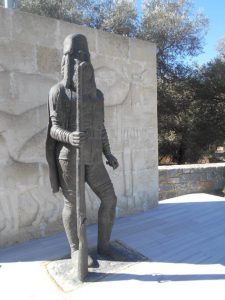 Take the road (east) out of the village, which climbs steadily to swing south and reach a distinctive concrete water cistern, which marks the start of the route down the Keratidias Gorge to the sea. Keep initially left of a wire fence, then find the best way through and between boulders and pine trees, always downhill. There’s no waymarking, but if things become steeper or more difficult, keep well to the left against the gorge wall, especially through oleander bushes lower down.
Take the road (east) out of the village, which climbs steadily to swing south and reach a distinctive concrete water cistern, which marks the start of the route down the Keratidias Gorge to the sea. Keep initially left of a wire fence, then find the best way through and between boulders and pine trees, always downhill. There’s no waymarking, but if things become steeper or more difficult, keep well to the left against the gorge wall, especially through oleander bushes lower down.
Eventually (c. 1.5 hrs) you’ll meet the E4 coast path, slightly inland here. Turn right for Sougia directly, but a 15-minute diversion to the caves/coast at Kaloyeros is recommended. Walk a short distance east, then take a narrow path, past a threshing circle, and scramble down over rocks to the shoreline.
Here is a small inlet where a launch would arrive from Egypt, under cover of darkness, guided in by torch signals. Supplies of clothing, food and ammunition were stored in two caves, at the rear of which was a passage/tunnel directly inland (though I’ve failed to find this.) Sitting under blue skies beside a calm sea, it’s hard to imagine events here during those terrible times in Crete.
Return to the main path, passing the exit of the Keratidias Gorge, and climb a steep ‘kalerimi’ to reach a col/saddle. Descending, a path (blue/white marking) leaves the E4, climbing NW to the “Cyclops Cave” (see ‘Explore’ – March 2011.)
The way ahead towards Sougia is obvious, the route contouring high above the coast with splendid views in both directions. A slight rise leads to a wide track, where you keep left, with Sougia now below you.
Two easily-missable ‘short-cuts’ will save a few minutes, otherwise stay on the track, which will eventually take you across the riverbed into the village.
* Extract from ‘Crete : the Battle and the Resistance’ – Antony Beevor
More about Koustoyerako and Kaloyeros can be found in the fascinating story :
“Vasili ; the Lion of Crete” (Murray Elliott) Both books available in “To Delfini”

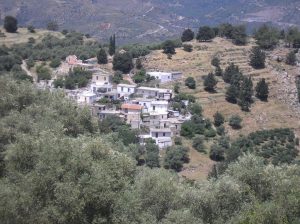

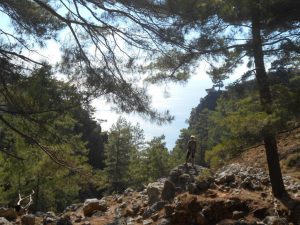

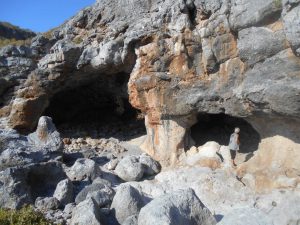
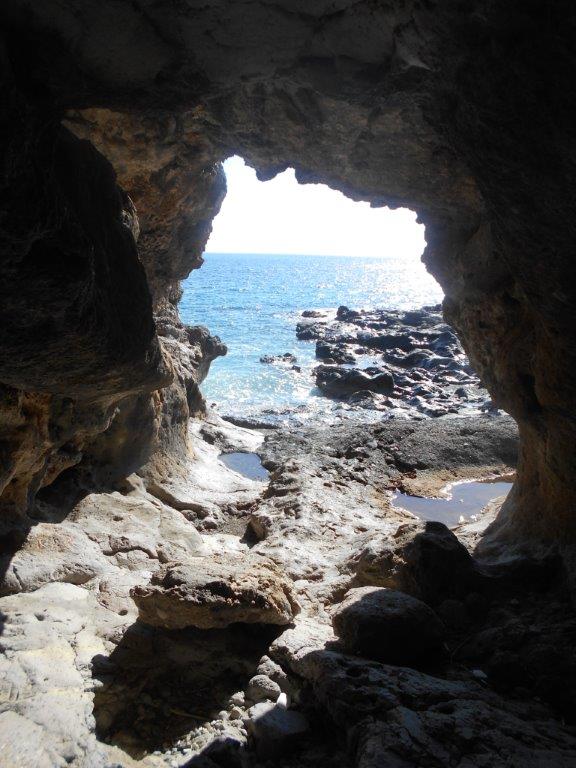
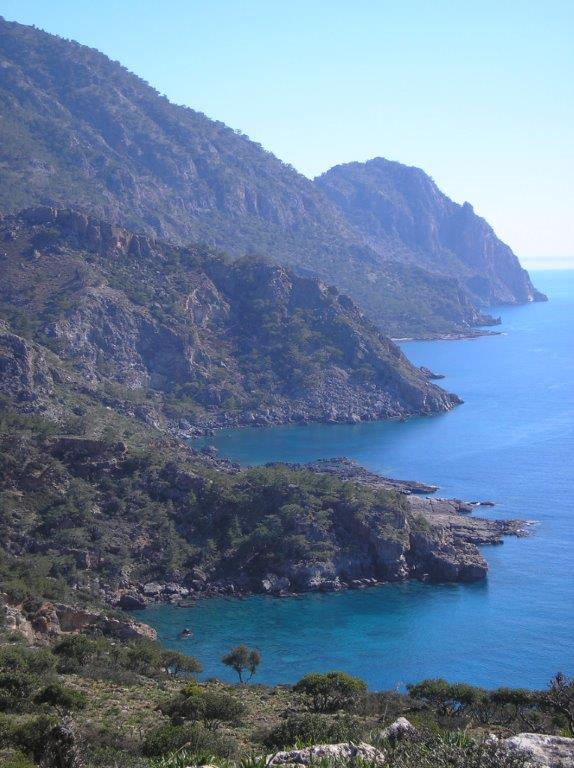
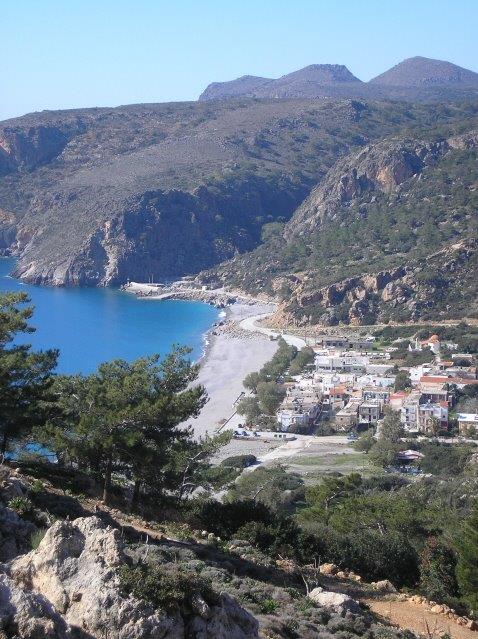

Recent Comments